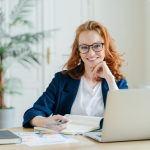Table of contents
Regulation IVDR 2017/746
The IVDR is a regulation of the European Parliament and of the Council on in‑vitro diagnostic medical devices. Its objective is to ensure a high level of health and safety protection for patients and users across the EU. It also harmonises the rules for placing IVDs on the market and putting them into service. :contentReference[oaicite:2]{index=2}
Key Requirements of IVDR 2017/746
The key requirements of the IVDR include classification of IVDs, technical documentation, conformity assessment procedures, and post‐market surveillance (PMS). These requirements are designed to ensure that IVDs are not only effective, but also safe for users and patients. :contentReference[oaicite:3]{index=3}
Classification of IVD Devices
Under the IVDR, IVDs are classified into four risk classes: A, B, C and D. Class A covers the lowest risk devices (e.g., sample containers); Class B refers to moderate risk devices (e.g., biochemical tests); Class C covers higher‑risk devices; and Class D includes the highest‑risk devices (e.g., tests used in oncology diagnostics). This classification affects the conformity assessment route and requirements for notified bodies. :contentReference[oaicite:4]{index=4}
Conformity Assessment for IVDs
The conformity assessment process depends on the device’s class. For Class A devices, manufacturers may self‑declare conformity and prepare the required technical documentation. For Classes B, C and D, involvement of a notified body is required, including review of documentation, audits and in some cases clinical performance studies. This ensures compliance with IVDR’s safety and performance requirements. :contentReference[oaicite:5]{index=5}
Technical Documentation for IVDs
The technical documentation required under IVDR must include a risk analysis, clinical and/or performance data, and evidence of conformity with regulatory requirements. It should also include a description of the device, its intended use, manufacturing and quality control processes. This documentation plays a central role in the conformity assessment. :contentReference[oaicite:6]{index=6}
Post‑Market Surveillance (PMS)
Post‑market surveillance is the ongoing monitoring of IVDs after they are placed on the market. Manufacturers must collect data on safety and performance, analyse adverse incidents, update risk assessments and implement corrective actions. For example, a manufacturer of a diagnostic test may track user‑feedback and incident reports to maintain compliance with IVDR and ensure continued product safety. :contentReference[oaicite:7]{index=7}
Identification and Traceability of IVDs
Every IVD device must be marked with a Unique Device Identifier (UDI) to enable traceability throughout the supply chain. The UDI consists of a unique device identifier, manufacturer information and batch or serial number. This system aids in rapid identification in case of incidents and plays a key role in market surveillance. :contentReference[oaicite:8]{index=8}




















